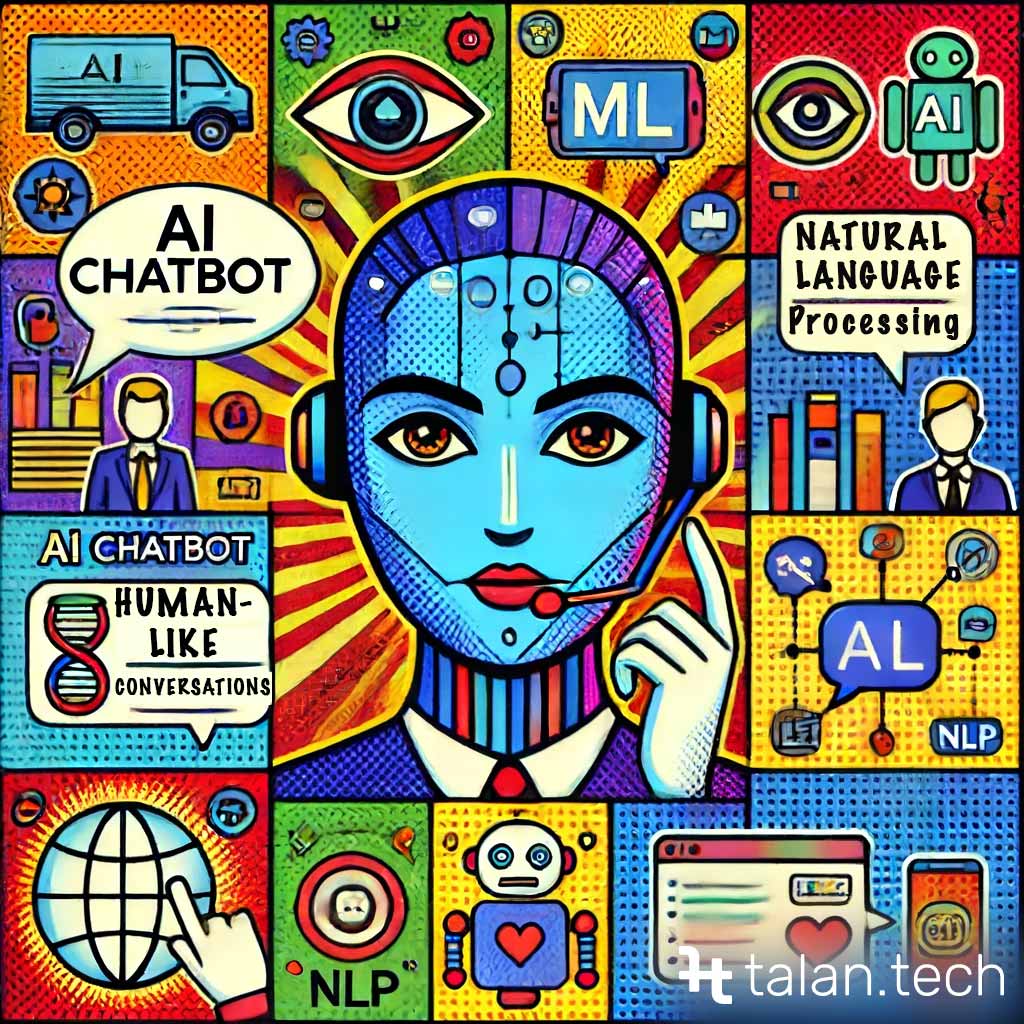AI Chatbots have become a pivotal part of modern technology, offering a seamless way to interact with users. These chatbots leverage Artificial Intelligence to provide automated, yet intelligent responses to user queries, enhancing user experience across various platforms. This article will briefly tell you the basics of what every modern person should know, even without using AI in everyday life.
What is an AI Chatbots?
An AI Chatbot is a software application that uses Artificial Intelligence to simulate human-like conversations with users. The history of chatbots dates back to the 1960s with the creation of ELIZA, a simple rule-based program. Over the years, chatbots have evolved significantly, transitioning from basic scripts to complex AI-powered systems.
Unlike traditional chatbots that rely on pre-programmed responses, AI-Powered Chatbots leverage Machine Learning and Natural Language Processing (NLP) to understand and respond to user inputs dynamically. This allows them to provide more accurate and relevant responses, improving the overall user experience.
Key Components of AI-Powered Chatbots
Machine Learning
Machine Learning (ML) is a critical component that allows chatbots to learn from data and improve their responses over time. By analyzing previous interactions, ML helps chatbots predict user intent and provide more accurate answers.
Natural Language Processing
Natural Language Processing (NLP) enables chatbots to understand and interpret human language. NLP algorithms parse user input to determine meaning and context, which is crucial for delivering relevant responses.
Conversational AI
Conversational AI combines ML and NLP to create more interactive and engaging chatbots. It allows for smooth, human-like conversations, enhancing user experience.
How AI Chatbots Work
AI Chatbots process data input through NLP, understanding the intent behind user queries. They generate appropriate responses based on this understanding and continuously learn from each interaction to enhance future responses. This process involves several stages:
- Data Input and Preprocessing: The chatbot receives and processes user input.
- Understanding and Response Generation: Using NLP, the chatbot interprets the input and generates a response.
- Learning and Improvement: Through Machine Learning, the chatbot improves its accuracy and relevance over time.
Types of AI Chatbots
- Rule-Based Chatbots: Operate on predefined rules and scripts.
- Conversational AI Chatbots: Use AI and NLP to engage in more natural and dynamic conversations. Other notable Chatbot AI technologies include BERT, LUIS, and IBM Watson.
- Chatbot GPT: Advanced chatbots like those powered by GPT (Generative Pre-trained Transformer) models can generate more nuanced and contextually accurate responses.
Benefits of AI Chatbots
AI Chatbots offer numerous benefits that make them invaluable across various industries:
- Enhancing Customer Support: AI Chatbots provide 24/7 customer service, handling queries and resolving issues promptly.
- Improving Operational Efficiency: Automating routine tasks allows businesses to focus on more complex and strategic activities.
- Increasing User Engagement: Personalized interactions and instant responses keep users engaged and satisfied.
Applications of AI-Powered Chatbots
AI chatbots are used across various industries to enhance user experience:
- Customer Service: Widely used in customer service to handle inquiries, resolve issues, and provide information, ensuring customer satisfaction and operational efficiency.
- Finance: By assisting customers with account information, transactions, and financial advice, they streamline financial services and enhance the user experience.
- Healthcare: In healthcare, chatbots assist patients by providing medical information, scheduling appointments, and offering preliminary diagnosis based on symptoms. They contribute to better patient engagement and efficient healthcare delivery.
- E-commerce: E-commerce platforms utilize chatbots for customer support, personalized recommendations, and streamlining the purchasing process. This enhances customer satisfaction and drives sales by offering tailored shopping experiences.
- Travel: An example is our own AI-driven travel chatbot, a 24/7 automated travel agent capable of booking airline tickets, managing cancellations, planning routes, and more. This chatbot is designed to simplify and enhance the travel experience for users by providing immediate assistance and personalized recommendations. Learn more about our AI-driven travel chatbot.
Challenges and Limitations
Despite their advantages, AI Chatbots face several challenges:
- Complexity in Understanding: Accurately interpreting user intent and context remains a significant hurdle.
- Data Privacy Concerns: Ensuring the security and privacy of user data is paramount.
- Dependency on Quality Data: The performance of AI Chatbots heavily depends on the quality and quantity of data they are trained on.
Future of AI Chatbots
The future of AI Chatbots looks promising, with advancements in Conversational AI paving the way for more sophisticated and intuitive interactions. Innovations in Machine Learning and Natural Language Processing will likely lead to chatbots that can understand and respond to human emotions, providing even more personalized and effective support.
Conclusion
In conclusion, AI is transforming how businesses interact with users. By leveraging Artificial Intelligence, Machine Learning, and Natural Language Processing, these chatbots offer numerous benefits, including 24/7 availability, cost efficiency, and improved customer interaction. As technology continues to advance, the role of AI chatbots will become even more significant in shaping the future of customer engagement. Further articles will reveal each aspect in more detail so that your understanding of the world expands.





